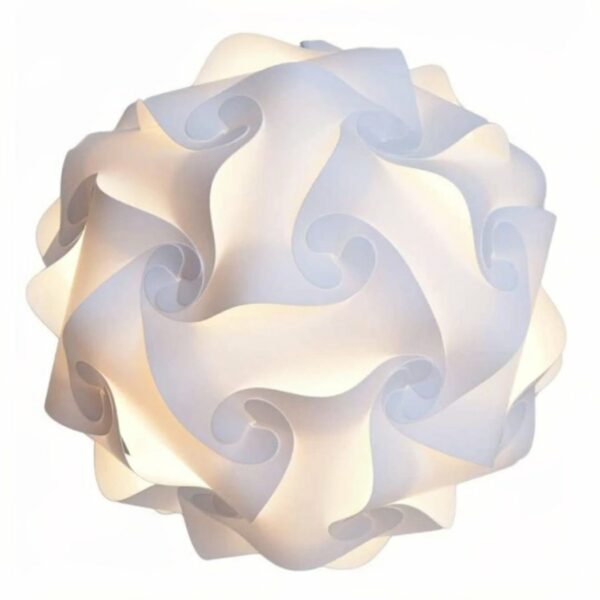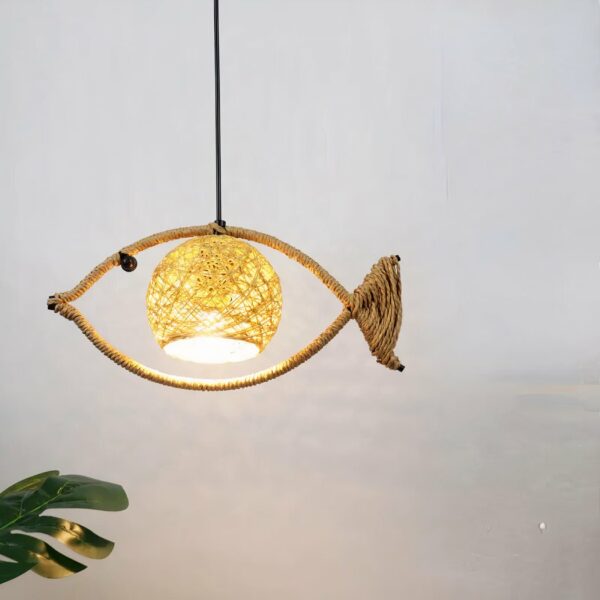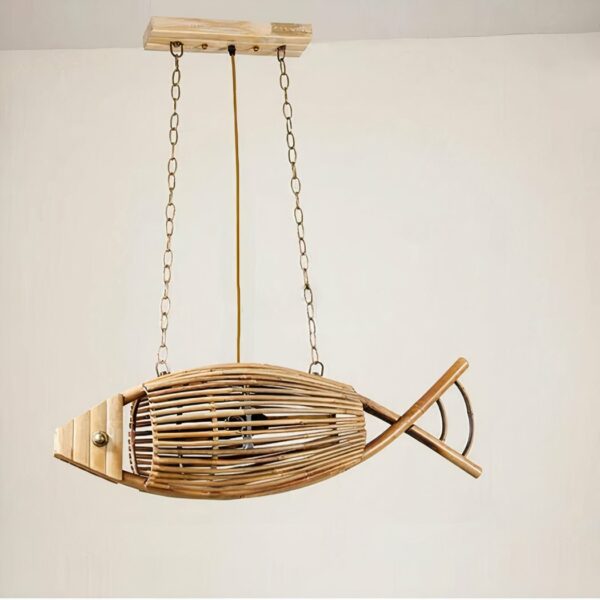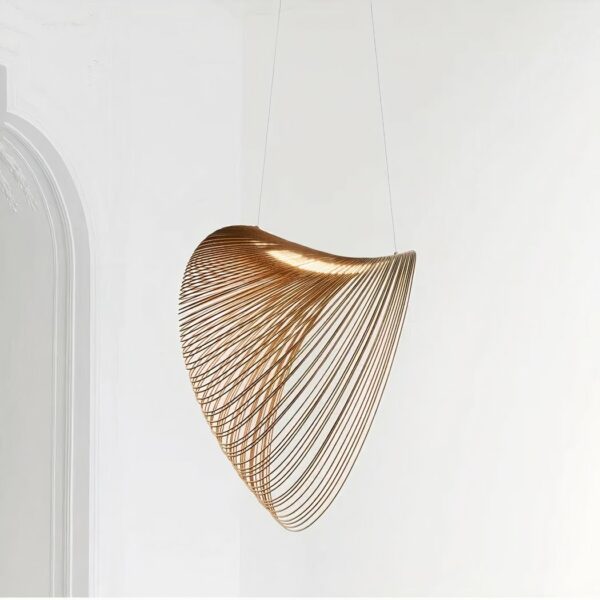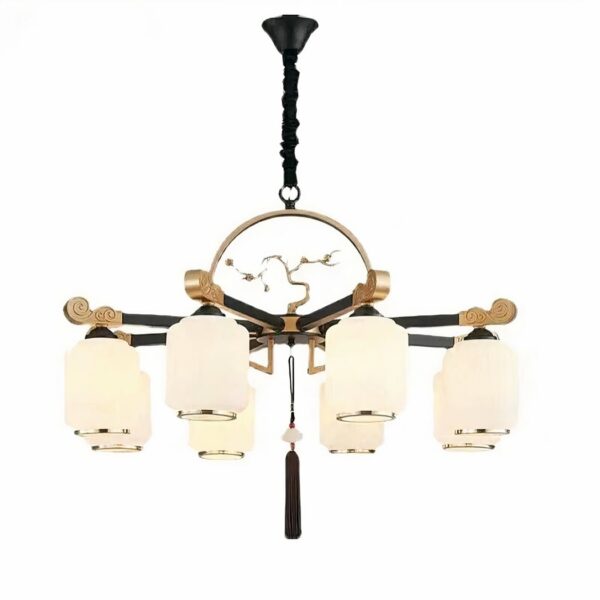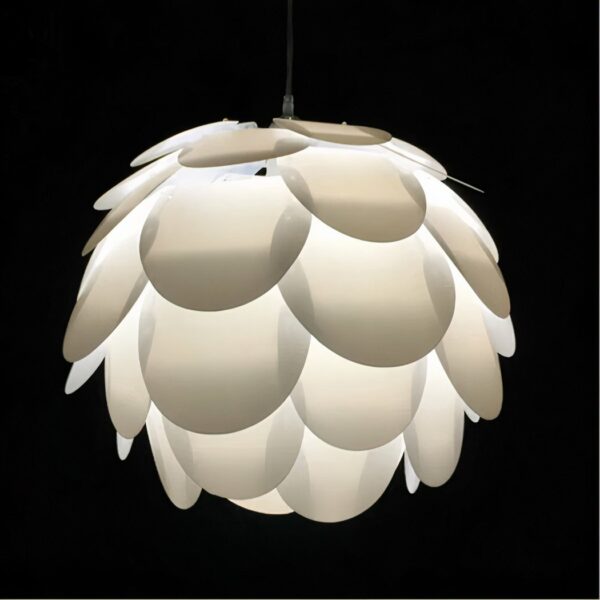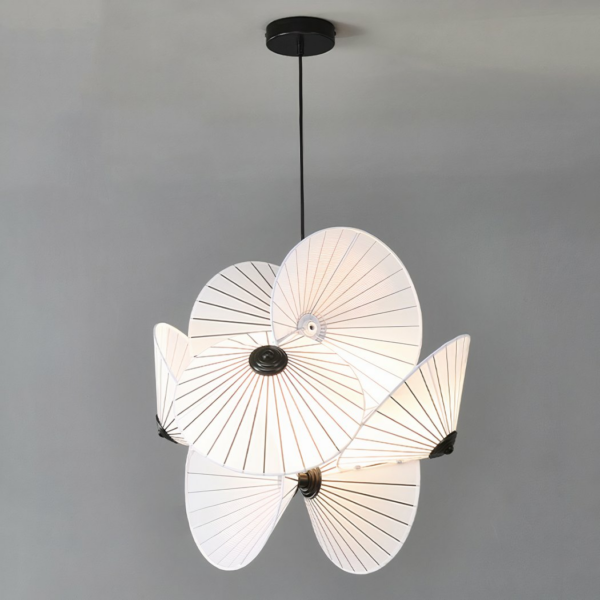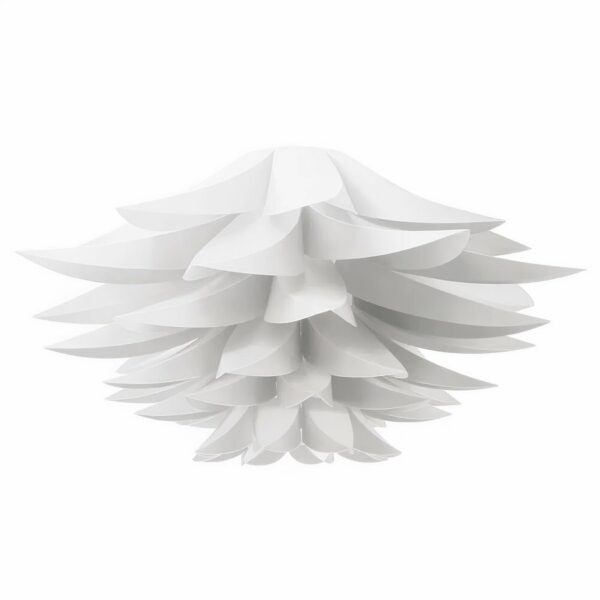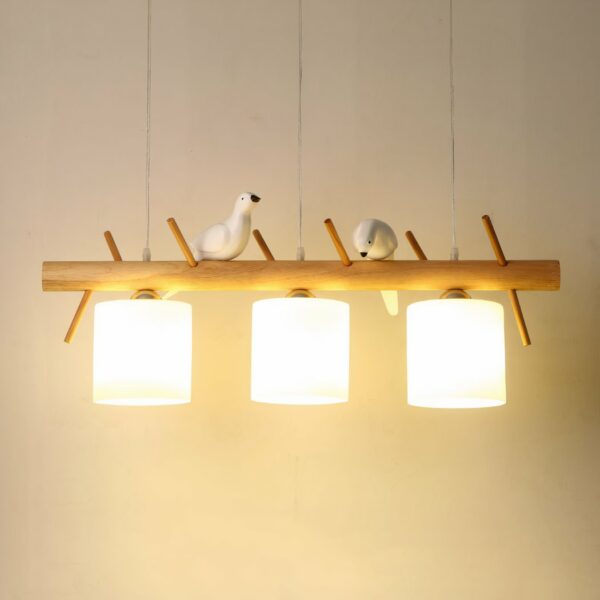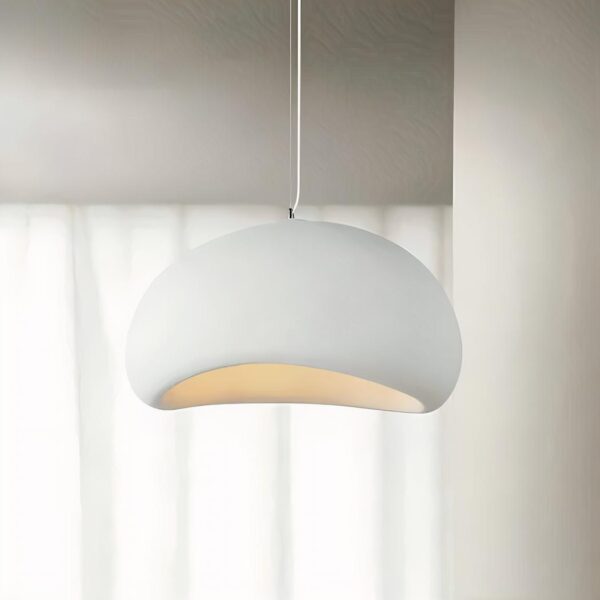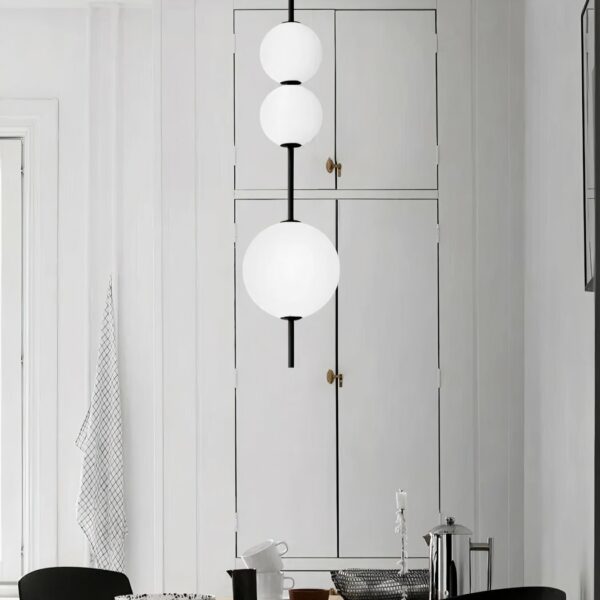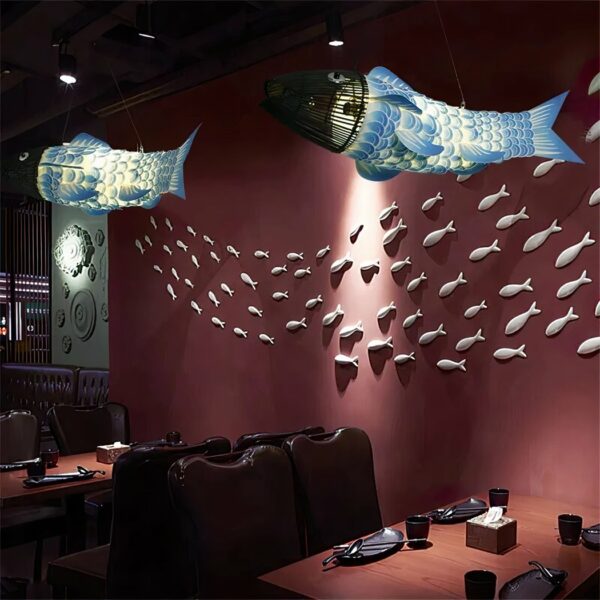Showing all 14 results
-
$39,80 – $59,80 Add to cart - $39,80 This product has multiple variants. The options may be chosen on the product page
-
$189,90 – $429,90 Add to cart - $189,90 This product has multiple variants. The options may be chosen on the product page
Showing all 14 results
Japanese chandeliers in a nutshell
The history of Japanese chandeliers is deeply rooted in the rich tradition of design and craftsmanship in the land of the rising sun, where lighting has always been designed to create an atmosphere of calm and serenity. Historically, the Japanese used paper lanterns, oil lamps and handmade lanterns to light their interiors, emphasizing softness and the natural diffusion of light.
Some models were designed with natural materials such as bamboo, linen or rattan. With the introduction of modern lighting technologies, traditional styles have evolved to incorporate new materials and techniques, while retaining minimalist aesthetics and functionality. This fusion of the traditional and the contemporary has resulted in unique ceiling lights, combining Japanese elegance and simplicity with modern innovations, and reflecting a deep respect for the harmony and balance of the core values of Japanese culture.
The essence of Japanese design in lighting
Japanese chandeliers: a marriage of simplicity and elegance
Japanese chandeliers, more than a simple Oriental chandelier, are distinguished by their remarkable style blending simplicity and elegance, fundamental qualities of Japanese design. These fixtures feature clean lines, minimalist shapes and a sober aesthetic, eschewing all superfluous ornamentation.
Simplicity doesn’t mean a lack of sophistication, but rather meticulous attention to detail and visual harmony. The elegance of Japanese chandeliers lies in their ability to create a peaceful, contemplative atmosphere, using light in subtle ways to transform the spaces of the home in a natural, gentle way. This minimalist approach to design allows Japanese chandeliers to blend perfectly into a variety of interior decors, adding a touch of timeless elegance, whatever their size.
Use of traditional and modern materials
In the creation of Japanese chandeliers, there is a harmonious marriage of traditional and modern materials, reflecting the ability of Japanese design to embrace the past while looking to the future. Traditional materials such as wood, bamboo, rattan (and other weaving materials), and washi paper are often used for their natural beauty and connection to Japanese craftsmanship. These materials are appreciated for their lightness, durability and ability to diffuse a soft, warm light.
In parallel, the use of modern materials such as metal, glass and plastics allows contemporary elements to be integrated, offering a greater variety of styles and shapes. This combination of old and new gives Japanese chandeliers a unique versatility, enabling them to blend into both traditional and modern environments.
A wide variety of styles
The fusion of modern and traditional
Japanese chandeliers perfectly exemplify the fusion of modern and traditional, a hallmark of contemporary Japanese design. This approach integrates traditional elements, such as the use of classical motifs and materials, with out-of-the-ordinary techniques and styles. The result is a harmonious balance between past and present, where clean, minimalist lines meet centuries-old craftsmanship.
This fusion creates unique lighting pieces that respect traditions while being adapted to contemporary needs and aesthetics. Whether through the use of LED technology or the integration of innovative lamps, these pendant lights offer a new perspective on traditional Japanese craftsmanship, making it relevant and appealing to the modern consumer.
Glass in Japanese chandelier design
The use of glass in Japanese chandelier design, as in the example of the Japanese LED hanging chandelier made of glass balls, brings a contemporary dimension to traditional lighting. These glass balls, often used to diffuse light softly and evenly, add a touch of elegance and modernity. The clarity and brilliance of glass contrast beautifully with more traditional elements, creating a play of light and shadow that enriches the atmosphere of the room.
Integrated LED technology ensures increased energy efficiency and longevity, while providing bright, clear light. This type of ceiling light is a perfect example of how modern techniques can enhance and transform traditional designs, creating rooms that are both rooted in tradition and resolutely forward-looking.
Harmonizing Japanese style with contemporary interiors
Tips for pairing Japanese chandeliers with a variety of decors
Integrating Japanese chandeliers into a variety of decors requires a thoughtful approach to maintain balance and harmony in your space. In a modern or minimalist setting, Japanese chandeliers, with their sleek design, naturally complement the aesthetic while adding a touch of elegance. For more traditional or eclectic interiors, a Japanese chandelier can serve as a subtle focal point, providing intriguing contrast without visually overpowering the room. It can then be easily installed in a living room.
In a bedroom, it can be combined with the various elements of the space, such as the lampshade, bedside table or even the headboard. When combining with styles such as Scandinavian, bohemian or even retro, choose chandeliers with natural materials and simple shapes to maintain visual cohesion. Finally, consider the room’s overall lighting to ensure that the chandelier complements the overall mood while providing adequate light.
Creating a Zen ambiance with Japanese chandeliers
Japanese chandeliers are ideal for creating a Zen atmosphere in any space, thanks to their soft light and soothing design. To maximize this effect, opt for chandeliers that use natural materials such as wood or bamboo, and neutral or soft colors that evoke serenity. The key is to choose lighting that diffuses a warm, welcoming light, without being too bright or glaring. This is essential especially in a room with lots of shadows and that doesn’t receive much natural daylight.
Associate the chandelier with other Zen decorative elements, such as green plants, natural stones, or softly textured fabrics, to reinforce the atmosphere of calm and relaxation. A well-chosen Japanese chandelier can transform an ordinary space into a haven of peace, inspiring tranquility and meditation.
FAQ about Japanese chandeliers:
What are the distinctive features of Japanese chandeliers?
Japanese chandeliers are characterized by their clean, minimalist design, the use of natural materials such as wood and bamboo, and often nature-inspired shapes. They feature a soft, diffused light, reflecting the Japanese Zen aesthetic.
How to integrate a Japanese chandelier into a Western setting
To integrate a Japanese chandelier into a Western decor, choose designs that complement the simplicity and modernity of your space. Japanese-style pendant lights can serve as the centerpiece of a minimalist or modern-style room.
What are the unique features of Japanese chandeliers?
Japanese chandeliers, often known as “Andon” or “Chochin” chandeliers, have distinctive features that reflect traditional Japanese aesthetics. They are generally made from natural materials such as washi paper, which gently diffuses light, creating a soothing, welcoming ambience. The structures of these chandeliers can be made of wood or bamboo, offering elegant simplicity and discreet sturdiness. Decorative motifs often vary, from minimalist designs to floral motifs or landscapes, reflecting the importance of nature in Japanese culture.
